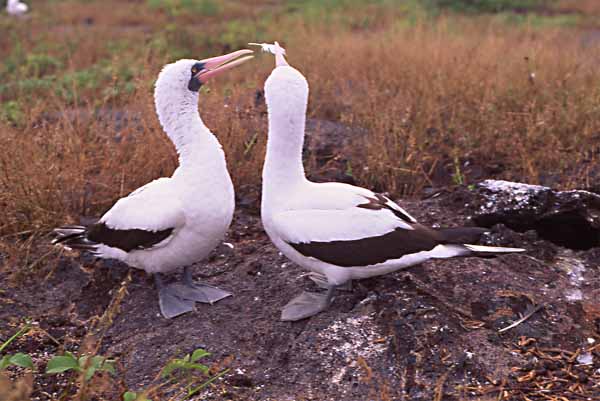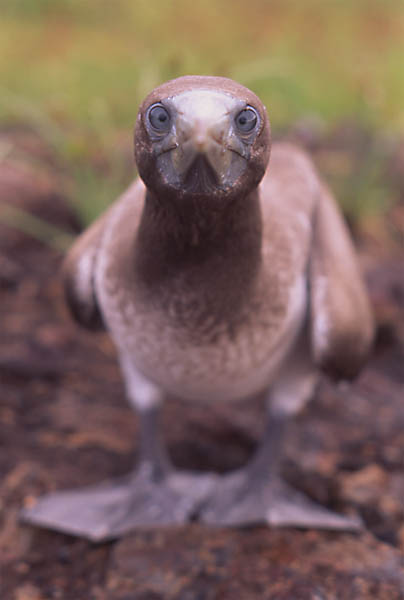The masked booby (Sula dactylatra) is the biggest of the booby species with a wingspan up to five feet
across. It is colored black and white, rather plain compared to its more colorful relatives. Also, its courtship is
less elaborate, but it is a beautiful bird. It is a ground nester, like the blue-footed booby so there is some
competition for nest space. However, the masked booby tends to prefer rocky cliff areas, which tend to be on the
periphery of the blue-foot colonies. This not only reduces competition but also means the masked boobies have the
benefit of strong winds to help them get aloft.
Its name comes from the "mask" of dark facial skin at the base of the bill. The masked booby's feet are a
dull gray, and they are not used in courtship display.
Masked boobies are abundant throughout the Galapagos, and have large colonies on Hood Island and Tower Island. Like
other members of the Sulidae (Gannet) family, they are plunge-divers. To avoid competition with the other species,
they feed in deeper waters between the islands, rather than close to shore like the blue-footed booby or the open
ocean like the red-footed booby. The Galapagos population of masked boobies is considered to be an endemic
subspecies (Sula dactylatra granti).
The pictures on this page were taken on
Tower Island.
To learn more, see masked booby natural history information and
Boobies—general information
|







